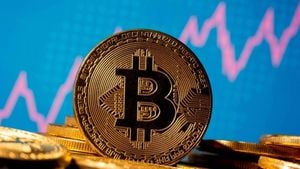Inflation has emerged as a significant factor influencing the world of real estate and investment strategies. With rising rates, many investors are re-evaluatin their portfolios and investment choices, seeking to navigate the shifting economic landscapes.
Over recent years, the relationship between inflation and property values has become increasingly complicated. Fluctuating inflation rates can have far-reaching effects across various sectors, particularly real estate, where property prices, rental yields, and investment strategies all take the hit. Deciphering how inflation shapes property values is pivotal for homeowners, investors, and analysts alike. That said, what exactly is inflation?
Simply put, inflation entails the general increase in prices and fall in the purchasing value of money over time. When inflation strikes, the value of money diminishes, prompting people to require more currency to purchase the same goods and services. For example, soaring inflation might push the price of goods like gas or groceries up significantly. This rise doesn’t only impact everyday items but extends to larger investments such as properties.
So, how does inflation impact purchasing power when it involves real estate? Well, inflation reduces the purchasing power of money, making it more challenging for consumers and investors to buy properties. It’s easy to see how the twin forces of rising construction costs and dwindling money value affect the housing market. Homebuyers who could afford properties yesterday might find their finances stretched today, especially if wages remain stagnant.
Rising construction costs due to inflation serve as another layer of complication for the real estate sector. Take materials like timber and cement, for example. Inflation drives up the cost of these essentials, resulting not only in pricier properties but also curtailing the ability for average consumers to enter the housing market. New buyers are often left high and dry, leading to lower transaction volumes, even if demand for existing properties holds firm. Interestingly, as inflation continues to push prices upwards, existing properties may become more desirable.
On another front, tax rules and savings become part of the discussion. When inflation rises, the money saved today will buy less down the road. If savings accounts yield relatively low interest, the real value of those savings, after adjusting for inflation, could dwindle significantly. For some people, this scenario opens the door to alternative investments. Real estate often appears as the go-to choice, seen as both stable and profitable compared to low-yield savings accounts. The notion is simple: property tends to appreciate over the long haul, acting as both wealth storage and income source.
With tax implications becoming more complex amid rising inflation, savvy investors increasingly opt for assets like real estate or inflation-indexed bonds, which aim to preserve capital and purchasing power. Bonds tied to inflation are particularly attractive, offering payouts adjusted according to inflation metrics, which provide some form of safety for investors.
Delving back to inflation, it’s noteworthy how its rise correlates with property prices. Historically, when we see higher inflation, property values often rise as well. The reasons vary—from increased construction costs to the tendency of investors seeking out tangible assets to safeguard against depreciated cash value. Investors pivot toward real estate during inflationary periods because it can often offer consistent returns, like rental income, which tends to rise alongside inflation.
Coming to the strategies for mitigating inflation risks, it’s all about smart diversification. Broadening investment portfolios across various asset classes—real estate, stocks, and bonds—plays to investors' advantage. Also, high-demand property markets often witness stronger returns even when inflation nudges up construction costs.
Another strategy involves investing in commodities like gold and silver, which typically hold their value well during inflation spikes, providing some additional security for investors. The fundamental takeaway is clear: as inflation persists, so does the importance of strategically approaching investments, particularly real estate.
On the flip side, the persistently low-interest rate climate presents challenges of its own. For savers, income-focused investors are under pressure as traditional savings accounts yield little return. Harbour Investment Partners, for example, has identified the potential consequences of this scenario affecting income-dependant individuals and retirees. Jeffrey Triganza, CEO of Harbour Investment Partners, asserted the necessity of proactive planning. Consumers, when faced with minimal returns from fixed-income instruments, must look to diversify their portfolios to include inflation-protected securities and high-yield alternatives.
What this means for the broader economy cannot be overlooked. If savers become less inclined to spend due to diminishing returns, overall economic growth could take a hit, resulting in ripples across various sectors. So, as more investors lean toward diverse options, new paths emerge within the financial services market, reshaping investors’ roles within economic ecosystems.
Despite the apparent hurdles caused by low rates and inflation, the financial climate also bodes opportunities. Adaptive and personalized financial planning is the order of the day. Firms like Harbour Investment Partners stress acting swiftly to capitalize on attractive fixed-income products before they vanish from the market.
Long story short, inflation continues to insist on its significance across real estate and investment landscapes. Being attuned to these dynamics is key. Individuals pursuing success within the investment space must remain cognizant of economic shifts and strategize accordingly. Strategies focusing on diversification and alternative investments will likely remain pillars of smart financial decision-making amid these ever-changing conditions.



